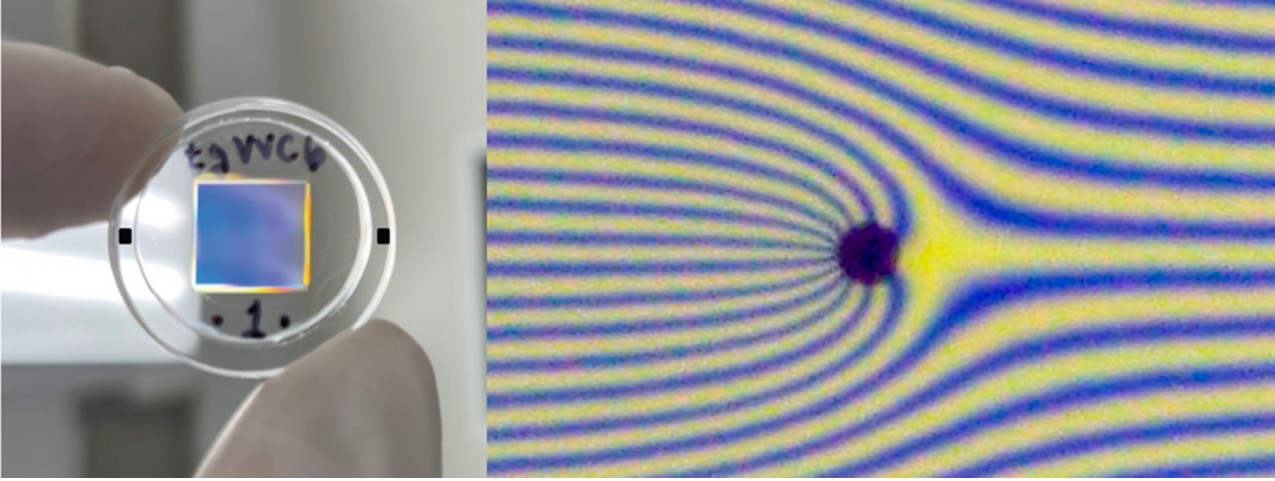Perhaps the most profound questions in astronomy are about life: Are we alone? What makes a planet habitable? Is our Solar System unique? To answer these questions, astronomers have developed powerful telescopes to search for planets around other stars, called exoplanets. Notable examples include the Kepler mission, the James Webb Space Telescope, and upcoming initiatives such as ESA’s PLATO and Ariel missions.
So far, over five thousand planets have been discovered. Astronomers estimate that nearly every star hosts at least one planet. Many earth-sized planets have been discovered orbiting nearby stars within their habitable zones, where surface water could appear in liquid form. To study the atmospheres and surfaces of these potentially habitable worlds, we must continue improving the sensitivity of our detection methods. To this end, SRON is working on optical components using liquid-crystal technology, together with NOVA.

Figure 1. The image of a star swamps the planetary system around it. Blocking the starlight creates a dark area at the position of the parent star (left) and the planetry system becomes visible (right).





